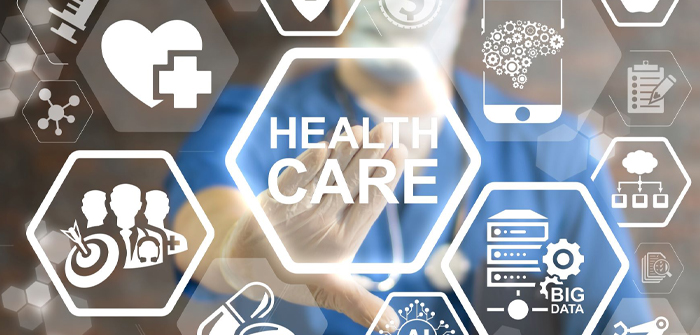The worldwide pandemic has tested the healthcare sector’s resilience and ability to deliver care despite its restrictions and challenges. While the sector has demonstrated an impressive adoption of innovative services and digital technologies, it has also exposed its vulnerabilities to cyberattacks and system distress.
As we move past the first months of 2021, we continue to see technology as a vital component of its development—with the areas of cybersecurity, telemedicine, and AI-driven tech as the primary focus. We also see the continued use of digital tools, such as telemedicine, as the default mode of delivering patient care. Aside from these, trends also point to patient self-care through wearable devices and digital mental health therapies.
2021 Healthcare Predictions
- Increased Emphasis on Safety
If there is one thing that we learned from the previous year, healthcare is essential. It is now everyone’s priority to ensure that homes, businesses, and institutions remain safe from the virus.
In healthcare settings, personal protective equipment ensures health workers are protected from Covid and other diseases. Having the proper outfit can help protect both the healthcare staff and patients. For instance, medical scrubs by keswi are made from materials that wick moisture away so that unwanted waste and fluids don’t stick to your person.
Elsewhere, businesses and institutions adhere to established protocols. For this year, healthcare in the workplace becomes a priority to ensure that companies continue to thrive. On-premises screening, sanitation stations, and employee health monitoring have become vital for these enterprises’ continued operation.
Healthcare is a priority in every aspect of life. Make it front and center through widespread implementation of safe workplaces as well as on-premises screening and sanitation stations. Invest in advanced health monitoring tools to detect COVID-19 and safeguard employees’ overall health and wellbeing.
- AI-Driven Technologies
Artificial Intelligence (AI) served a vital role in combating COVID-19. This year, AI-driven technology can help transform healthcare into a predictive model of care. AI can analyze real-time patient data and detect early signs of illness, allowing physicians to perform appropriate interventions.
The ability of AI to ‘learn’ from feedback is also beneficial for the healthcare industry. This technology allows machines to update their response from multiple sources such as clinicians, nurses, and research institutions.
Data derived from medical notes, electronic recordings, various medical devices, physical examinations, and laboratory test results can help provide a comprehensive database that enables AI to create accurate patient care decisions.
- Telemedicine and Remote Consultations
Telehealth boomed in 2020 as the government imposed travel restrictions to curb the spread of the Coronavirus. It has dramatically reduced the influx of walk-in patients to clinics and has led some to forego much-needed consultation and treatment.
Now, telehealth practices are seen as a viable channel to ensuring continuous care and monitoring. The convenience of virtual care has eliminated the need for travel, and it has even diminished the stigma associated with care and treatment.
Telemedicine continues to advance in 2021 as it works on ways to ensure universal access to these services. Efforts are directed at improving access and coordination of patient care. Initiatives toward user-friendly patient platforms and bundle offers for patients with chronic conditions will surely increase its use this year and in the years to come.
- Use of Wearable Devices
Apart from virtual consultations, people are now increasingly taking control of their health conditions using wearable technology, such as smartwatches and wrist monitors. These devices are equipped with features that track a person’s physical activity, sleep patterns, heart rate, blood oxygen levels, blood pressure, and even perform ECGs. These wearables are synced to mobile apps and even have the ability to send updated health reports to physicians.
As health consumers see and realize the health benefits of wearable devices, innovations are being developed to enhance personalization and accuracy. There will also be increased connectivity between devices that could improve remote patient monitoring. Developments for this industry include self-help efforts such as medication adherence, information libraries, and improved decision-making for personal health and wellness.
Businesses can also benefit from these wearable technologies. Smartwatches and sensor hardware can monitor employee health and wellness. This can help reduce employee turnover and increase workplace productivity.
Insurers can also look into the viability of including such devices to promote longevity and look for ways to bring down costs and make it more accessible to the broader population.
- Cybersecurity Measures
In the past year, we have witnessed vicious cyberattacks on the healthcare system that threatened patient data and health. Now, efforts are geared towards enhancing data security measures for the healthcare industry.
Cloud transition is seen as a viable alternative to enable proper management of growing patient data. Data security is paramount in keeping health information safe. Healthcare IT systems must provide advanced protection against privacy breaches and data leaks to ensure that the previous attacks are not replicated in the years to come.
- Increase in Mental Health Support
The mental impact of the global pandemic has caused an increased awareness of mental health issues. As we move further into 2021, mental healthcare services will be pushed at the forefront as more and more individuals struggle with anxiety and depression. Government and private efforts that help alleviate these conditions will become mainstream. Digital consultations and virtual therapies are ways to address this pressing concern for this year and beyond.
Conclusion
Healthcare is vital in 2021 and beyond. This year’s predictions are based on the healthcare sector’s strengths and vulnerabilities exposed by the recent pandemic. While it has shown an impressive ability to cope with rigorous demands, the health sector needs to overcome challenges to address the demands imposed on global systems.
In 2021, we see a continued emphasis on safe workplaces, beginning with hospitals and other patient care settings. The use of PPE remains mandatory, along with health monitoring tools to ensure worker safety. These protocols are also applicable to businesses.
Apart from the workforce, healthcare IT also needs to ensure data integrity by adopting cloud-based storage and increasing patient data from wearable devices and telehealth consultations. AI-driven technology is seen as a beneficial tool as healthcare evolves into a predictive approach to maintain health and longevity for all.






